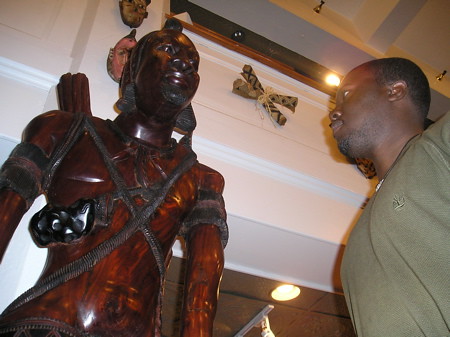
JeffreyBaker, Southern Univeristy Museum of Art, 610 Texas, Shreveport, a photo by trudeau on Flickr.
The Great Migration was the movement of 2 million blacks out of the Southern United States to the Northeast, Midwest and West from 1910 to 1930, says Wikipedia.[1]
African Americans migrated to escape racism and prejudice in the South, as well as to seek jobs in industrial cities.
Some historians differentiate between a First Great Migration (1910–30), numbering about 1.6 million migrants, and a Second Great Migration (1940 to 1970), in which 5 million or more people moved and to a wider variety of destinations.
From 1965–70, 14 states of the South, especially Alabama, Louisiana and Mississippi, contributed to a large net migration of blacks to the other three cultural (and census-designated) regions of the United States.[2]
By the end of the Second Great Migration, African Americans had become an urbanized population. More than 80 percent lived in cities. Fifty-three percent remained in the South, while 40 percent lived in the North and 7 percent in the West.[3]
A reverse migration has gathered strength since 1965, dubbed the New Great Migration, the term for demographic changes from 1965 to the present which are a reversal of the previous 35-year trend of black migration within the United States.
